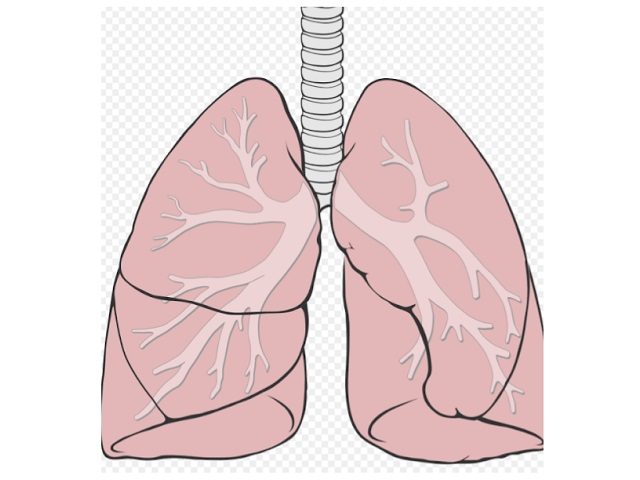7 Signs You May Have Acute Respiratory Distress Syndrome -- Symptoms, Causes, Effects, Treatment and Prevention
Image by Patrick J. Lynch, CC BY-SA 2.5, via Wikimedia Commons
Acute Respiratory Distress Syndrome (ARDS) is a severe respiratory condition characterized by widespread inflammation in the lungs, leading to fluid accumulation and difficulty in breathing. It is often caused by an underlying injury or infection and can result in life-threatening respiratory failure.
Symptoms of Acute Respiratory Distress Syndrome:
The symptoms of ARDS may include:
- Severe shortness of breath and rapid breathing
- Rapid heart rate
- Low blood oxygen levels
- Cyanosis (bluish discoloration of the lips and skin)
- Severe fatigue and weakness
- Confusion or disorientation
- Chest pain or tightness
Diagnosis of Acute Respiratory Distress Syndrome:
The diagnosis of ARDS typically involves the following:
- Medical history and physical examination: The doctor will inquire about symptoms, medical history, and perform a thorough examination, including assessing lung sounds.
- Chest X-ray or CT scan: These imaging tests can reveal abnormalities in the lungs, such as the presence of fluid or infiltrates.
- Arterial blood gas analysis: This test measures the oxygen and carbon dioxide levels in the blood, providing information about respiratory function.
- Pulmonary function tests: These tests assess lung capacity and function.
- Measurement of oxygen levels: Continuous monitoring of oxygen saturation levels using a pulse oximeter.
Causes of Acute Respiratory Distress Syndrome:
ARDS can be triggered by various factors, including:
- Pneumonia or severe lung infection
- Inhalation of harmful substances or chemicals
- Lung injury due to trauma, such as a severe accident or near-drowning
- Sepsis (systemic infection)
- Pancreatitis (inflammation of the pancreas)
- Blood transfusion-related lung injury
- Drug overdose or reaction
Effects of Acute Respiratory Distress Syndrome:
ARDS can have significant effects on the body, including:
- Severe respiratory distress and difficulty in breathing
- Reduced oxygen supply to vital organs, leading to organ dysfunction
- Pulmonary fibrosis (scarring of lung tissue)
- Development of secondary infections, such as pneumonia
- Hemodynamic instability and cardiovascular complications
- Prolonged hospitalization and intensive care requirements
Treatment of Acute Respiratory Distress Syndrome:
The management of ARDS focuses on supportive care and addressing the underlying cause. Treatment options may include:
- Mechanical ventilation: In severe cases, a ventilator is used to provide oxygen and support breathing.
- Oxygen therapy: Supplemental oxygen is administered to maintain adequate oxygen levels in the blood.
- Medications: Drugs such as antibiotics, diuretics, and vasopressors may be prescribed based on the underlying cause and specific patient needs.
- Prone positioning: Placing the patient in a prone position can improve oxygenation and lung function.
- Fluid management: Careful monitoring and regulation of fluid intake to avoid fluid overload and maintain hemodynamic stability.
Prevention of Acute Respiratory Distress Syndrome:
Preventing ARDS involves addressing potential risk factors and implementing preventive measures:
- Prompt treatment of underlying infections or conditions that can lead to ARDS
- Adequate management of trauma or injuries to prevent lung damage
- Avoiding exposure to harmful substances or chemicals
- Implementing appropriate ventilation strategies in critically ill patients
It is crucial to consult with healthcare professionals for accurate diagnosis, individualized treatment, and management of ARDS.
References:
National Heart, Lung, and Blood Institute. (2021). Acute Respiratory Distress Syndrome (ARDS). Retrieved from https://www.nhlbi.nih.gov/health-topics/acute-respiratory-distress-syndrome
Rubenfeld, G. D., Caldwell, E., Peabody, E., et al. (2005). Incidence and outcomes of acute lung injury. New England Journal of Medicine, 353(16), 1685-1693.
Fan, E., Brodie, D., Slutsky, A. S. (2018). Acute Respiratory Distress Syndrome: Advances in Diagnosis and Treatment. JAMA, 319(7), 698-710.
Herridge, M. S., Tansey, C. M., Matté, A., et al. (2011). Functional Disability 5 Years after Acute Respiratory Distress Syndrome. New England Journal of Medicine, 364(14), 1293-1304.













